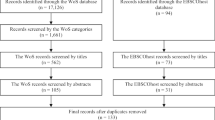Abstract
Agent-based simulation is increasingly used in industry to model systems of interest allowing the evaluation of alternative scenarios. By this means, business managers can estimate the consequences of policy changes at low cost before implementing them in the business. However, in order to apply such models with confidence, it is necessary to validate them continuously against changing business patterns. Typically, models contain key parameters which significantly affect the overall behaviour of the system. The process of selecting such parameters is an inverse problem known as ‘tuning’ In this chapter, we describe the application of computational intelligence to tune the parameters of a workforce dynamics simulator. We show that the best algorithm achieves reduced tuning times as well as more accurate field workforce simulations. Since implementation, this algorithm has facilitated the use of simulation to assess the effect of changes in different business scenarios and transformation initiatives.
Access this chapter
Tax calculation will be finalised at checkout
Purchases are for personal use only
Similar content being viewed by others
Notes
- 1.
This time was measured on an Intel(R) Core(TM) i5 CPU M 520 @ 2.40 GHZ, 1.86 GB of RAM.
References
Baluja S (1994) Population-based incremental learning: a method for integrating genetic search based function optimization and competitive learning. DTIC, Fort Belvoir
Baluja S (1995) An empirical comparison of seven iterative and evolutionary function optimization heuristics. Carnegie Mellon University, Pittsburgh
Borenstein Y, Shah N, Tsang EPK, Dorne R, Alsheddy A, Voudouris C (2010) On the partitioning of dynamic workforce scheduling problems. J Schedul 13:411–425
Davis T (1996) The handbook of genetic algorithms. Van Nostrand Reinhold, New York
Goldberg DE (1989) Genetic algorithms in search, optimization and machine learning. Addison-Wesley, Boston, MA
Gonzalez C, Lozano JA, Larrañaga P (2002) Mathematical modelling of UMDAc algorithm with tournament selection. Behaviour on linear and quadratic functions. Int J Approx Reason 31:313–340
Kirkpatrick S, Gelatt CD, Vecchi MP (1983) Optimization by simulated annealing. Science 220:671–680
Larrañaga P, Lozano JA (eds) (2002) Estimation of distribution algorithms: a new tool for evolutionary computation. Springer, Berlin
Liret A, Dorne R (2009) Work allocation and scheduling. In: Voudouris C, Owusu G, Dorne R, Lesaint D (eds) Service chain management: technology innovation for the service business. Springer, Berlin
Liret A, Shepherdson J, Borenstein Y, Voudouris C, Tsang E (2009) Workforce dynamics simulator in service operations scheduling systems. In: Conference on enterprise information systems
Makridakis S, Hibon M (2000) The m3-competition: results, conclusions and implications. Int J Forecast 16(4):451–476
Mitchell M (1997) An introduction to genetic algorithms. MIT Press, Cambridge
Muehlenbein H, Paaß G (1996) From recombination of genes to the estimation of distributions I. Binary parameters. In: Parallel problem solving from nature PPSN IV. pp 178–187
Otten RHJM, van Ginneken LPPP (1989) The annealing algorithm. Kluwer, Boston, MA
Petrovski A, Shakya S, McCall J (2006) Optimising cancer chemotherapy using an estimation of distribution algorithm and genetic algorithms. In: Genetic and evolutionary computation conference GECCO. pp 413–418
Rodgers JL, Nicewander WA (1988) Thirteen ways to look at the correlation coefficient. Am Statistic 42(1):59–66
Shah N, Tsang EPK, Borenstein Y, Dorne R, Liret A, Voudouris C (2009) Intelligent agent based workforce empowerment. In: KES-AMSTA’09. pp 163–172
Shakya S (2006) DEUM: a framework for an estimation of distribution algorithm based on Markov random fields. The Robert Gordon University, Aberdeen
Shakya S, McCall J (2007) Optimization by estimation of distribution with DEUM framework based on Markov random fields. Int J Automat Comput 4:262–272
Shakya S, Brownlee A, McCall J, Fournier F, Owusu G (2010) DEUM: a fully multivariate EDA based on Markov networks. In: Chen Y (ed) Exploitation of linkage learning in evolutionary algorithms. Springer, Berlin
Yuan B, Gallagher M (2009) Convergence analysis of UMDAC with finite populations: a case study on flat landscapes. In: Genetic and evolutionary computation conference GECCO. pp 477–482
Author information
Authors and Affiliations
Corresponding author
Editor information
Editors and Affiliations
Rights and permissions
Copyright information
© 2013 Springer-Verlag Berlin Heidelberg
About this chapter
Cite this chapter
Mamer, T., McCall, J., Shakya, S., Owusu, G., Regnier-Coudert, O. (2013). Understanding Team Dynamics with Agent-Based Simulation. In: Owusu, G., O’Brien, P., McCall, J., Doherty, N. (eds) Transforming Field and Service Operations. Springer, Berlin, Heidelberg. https://doi.org/10.1007/978-3-642-44970-3_12
Download citation
DOI: https://doi.org/10.1007/978-3-642-44970-3_12
Published:
Publisher Name: Springer, Berlin, Heidelberg
Print ISBN: 978-3-642-44969-7
Online ISBN: 978-3-642-44970-3
eBook Packages: Business and EconomicsBusiness and Management (R0)




